The Egret is a long-legged aquatic bird that belongs to the Ardeidae, or heron, family. All members of the heron family with white colored feathers are Egrets.
Genetically and morphologically, these and other members of the heron family are very similar. Some of the different species include the great Egret, little Egret, snowy Egret, cattle Egret, and more. Read on to learn about the Egret.
Description of the Egret
Even though there are several different species, most of these birds look relatively similar. They have long legs, and long curved necks. Their beaks are long and pointed, and typically used for catching fish. Some species are smaller, while other species grow over three feet tall. The largest species have a wingspan of approximately five and a half feet long.
Interesting Facts About the Egret
There are 11 different species of this bird, and each species is different. Learn more about some individual species below.
- Cattle Egret – Cattle Egrets are small white herons that often live near livestock. One of their favorite methods of hunting is by following cows and other large farm animals. They do not pick the bugs off the cattle, but instead eat the bugs that leave their hiding spots by the cow’s movement.
- Reddish Egret – As their name suggests, these birds are one of the few species that are not white. Instead, they are reddish-brown and light gray. Their name comes from the long, wispy feathers on their necks, though some adults are actually white.
- Snowy Egret – Snowy Egrets are bright white, with long delicate feathers on their necks and chests. Before the Migratory Bird Act protected this species, humans hunted these birds for their beautiful feathers. In fact, at one point their feathers were worth twice as much as their weight in gold!
- Great Egret – These birds aren’t the largest species of heron, but they are the largest species of these bird. The National Audubon Society, which protects various species of birds and their habitat, has this bird as its mascot.
Habitat of the Egret
Across the various species, these birds live in a variety of different habitats. Many species live primarily in shallow aquatic areas, like ponds, streams, lakes, marshes, wetlands, and more. They search for food in shallow waters, both saltwater and freshwater. Some species also live in agricultural fields, flooded meadows, and even dry areas like farms.
Distribution of the Egret
Different species of these birds have different ranges. Some species only live in a small area, and some species live across large regions. Species that live over large expanses of land often have multiple subspecies depending on the region.
Humans have even introduced some species to areas outside of their natural range. These birds live in North America, Central America, South America, Africa, Asia, Europe, Australia, and surrounding islands.
Diet of the Egret
These carnivorous birds are incredibly opportunistic. They feed on a wide variety of small creatures, though most of their food is aquatic. Basically, if they come across a potential meal, and they think they can fit it in their mouth, they try to eat it.
Some of their different types of prey include fish, insects, frogs, lizards, snakes, small birds, and even small mammals. Different species feed on different types of prey depending on where they live, but most eat just about anything.
Egret and Human Interaction
Historically, humans and Egrets haven’t quite coexisted, and we hunted many species extensively. Thankfully, various institutions have worked to help educate the public about the importance of these birds. Sadly, habitat destruction still poses a large threat to some species of these birds. The IUCN lists the reddish Egret as Near Threatened, the slaty Egret as Vulnerable, and the Chinese Egret as Vulnerable.
Domestication
Humans have not domesticated these birds in any way.
Does the Egret Make a Good Pet
No, these birds do not make good pets. These birds eat a wide variety of foods, but mostly fish. Fish doesn’t smell good going in, and it definitely doesn’t smell better coming out the other end. It is also illegal to own this bird as a pet in most places.
Egret Care
Oftentimes, run-ins with humans leave these birds injured in some way. When they are lucky, wildlife rescues care for them and release them back into the wild when they are healthy. Unfortunately, some injuries prevent them from being able to survive in the wild.
When this happens, zoos or aquariums take the birds in, and give them free food for the rest of their lives. Birds in zoos also act as ambassadors for their wild counterparts, and help teach visitors about protecting the environment and the animals in it.
Behavior of the Egret
The behavior of these birds various from species to species. Most of them are solitary while hunting, but roost in groups known as flocks. While hunting, most quietly stalk through shallow waters in search of prey. During the breeding season, large numbers of these birds, and often other bird species, congregate into massive breeding colonies.
Reproduction of the Egret
The breeding behavior of these birds varies from species to species. Most species congregate in large numbers when they reproduce. Some species breed with the same mate year after year, while others mate with a single partner in one breeding season and a new one the next year.
Depending on the species, incubation usually lasts a little less than a month long. Different species of these birds begin to fledge at different ages, some at a few weeks old, others at several months.

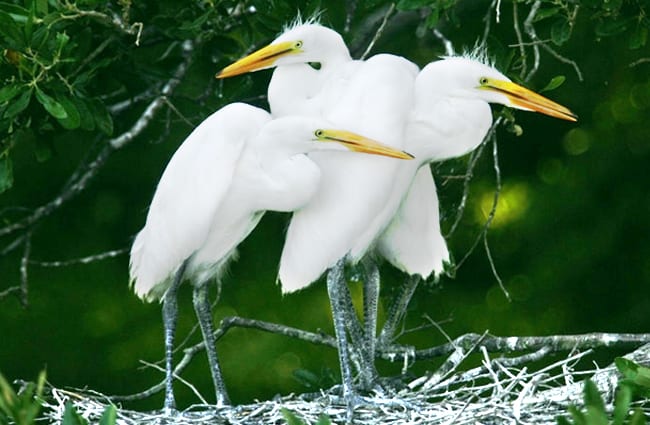


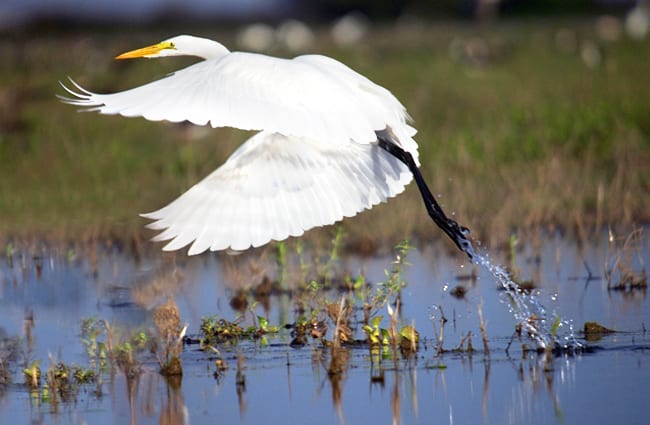
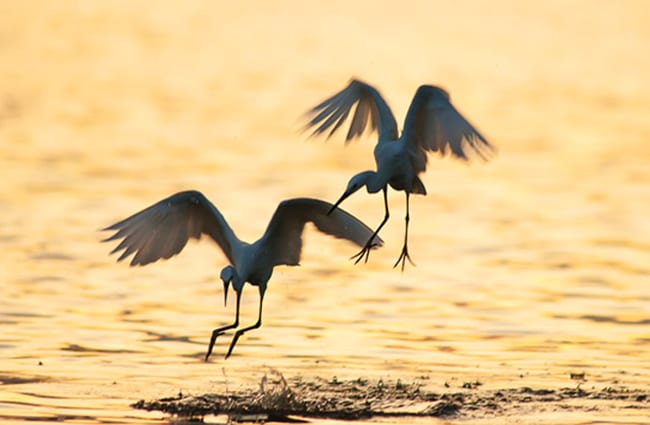


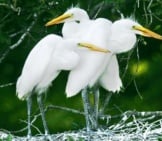
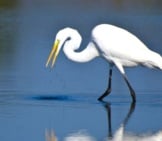
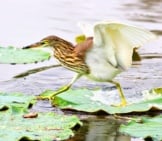
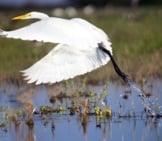

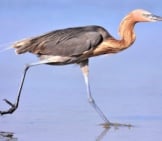

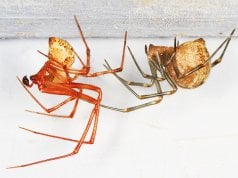
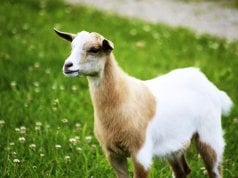











![Red Angus Closeup of a beautiful Red Angus cowPhoto by: U.S. Department of Agriculture [pubic domain]https://creativecommons.org/licenses/by/2.0/](https://animals.net/wp-content/uploads/2020/03/Red-Angus-4-100x75.jpg)

